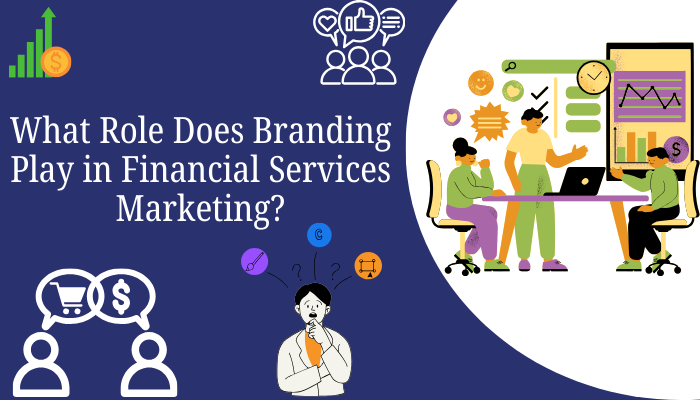What Role Does Branding Play in Financial Services Marketing?

In the fast-paced world of financial services, where competition is fierce and trust is paramount, branding emerges as a cornerstone of success. From established banks to emerging fintech startups, the role of branding in shaping perceptions, building trust, and fostering loyalty cannot be overstated. In this blog, we’ll explore the pivotal role that branding plays in financial services marketing and how it influences consumer behavior, competitive positioning, and long-term growth.
Establishing Trust and Credibility
At the core of financial services branding lies the mission to establish trust and credibility in the minds of consumers. A strong brand inspires confidence and reassurance in an industry where security and reliability are top concerns. Through consistent messaging, visual identity, and brand values, financial institutions convey their commitment to integrity, transparency, and customer-centricity. By building trust from the outset, brands lay the foundation for lasting client relationships.
Setting the Tone and Voice
Branding in financial services sets the tone and voice of the institution, shaping how it communicates with its audience. The brand’s voice reflects its personality and values, whether through formal language and professional imagery or a more approachable and conversational style. By crafting a distinct voice that resonates with the target demographic, financial institutions can humanize their brand and foster deeper connections with customers.
Differentiating from Competitors
In a crowded marketplace, branding serves as a critical tool for differentiation. Financial institutions must articulate what sets them apart from competitors and why consumers should choose their services over others. Through branding, companies can highlight their unique value proposition, expertise, and innovative offerings. Whether it’s through a focus on personalized service, cutting-edge technology, or niche expertise, effective branding helps financial institutions stand out in a competitive landscape.
Building Brand Loyalty
Brand loyalty is the holy grail of marketing in the financial services industry. A strong brand not only attracts new customers but also cultivates loyalty among existing ones. By delivering consistent experiences that align with the brand promise, financial institutions can foster a sense of belonging and affinity among their customer bases. Loyalty programs, exclusive perks, and personalized interactions further incentivize customers to stay loyal to the brand, even in the face of tempting offers from competitors.
Enhancing Customer Experience
Branding extends beyond logos and taglines; it encompasses the entire customer experience journey. From the moment a customer interacts with the brand to ongoing support and service, every touchpoint shapes their perception of the institution. Through branding, financial services providers can design seamless, intuitive experiences that delight customers and exceed their expectations. By prioritizing user-centric design, accessibility, and convenience, brands can create memorable experiences that keep customers coming back for more.
Facilitating Expansion and Diversification
As financial institutions expand their offerings and enter new markets, branding plays a crucial role in facilitating growth and diversification. A strong brand with a solid reputation provides a springboard for expansion into new products, services, and geographical regions. By leveraging the equity built in the brand over time, financial institutions can enter new ventures with confidence and credibility, minimizing the risk associated with new ventures.
Adapting to Changing Consumer Needs
In today’s dynamic marketplace, consumer preferences and behaviors are constantly evolving. Effective branding enables financial institutions to stay agile and responsive to these changes, ensuring relevance and resonance with the target audience. Whether it’s embracing digital transformation, addressing sustainability concerns, or catering to the needs of diverse demographic segments, brands that remain adaptable and innovative are poised for long-term success.
Conclusion:
In the ever-evolving landscape of financial services, branding emerges as a powerful catalyst for growth, differentiation, and customer loyalty. By investing in a strong brand identity, financial institutions can build trust, set themselves apart from competitors, and create meaningful connections with their audience. As the industry continues to evolve, the role of branding in shaping perceptions and driving success will only grow in significance.



